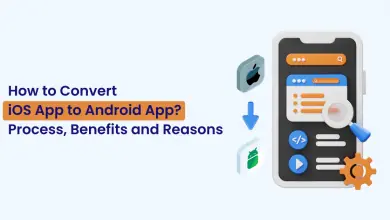Why are Businesses Choosing Cross-Platform App Development?

Over the years, the mobile development market has seen the emergence of 3 main families of applications.
Native applications, which are mobile applications developed with a language specific to the OS such as Swift/Objective-C for iOS and Java/Kotlin for Android.
Hybrid applications, which use web technologies (HTML, CSS, and JavaScript) and which are displayed in web views in applications.
Ionic, Cordova, and Phonegap are examples of hybrid technologies.
Cross-platform apps, which are native mobile applications generated from a single code base.
Thanks to technologies like Xamarin, React Native, or even Flutter, it is possible to generate applications for several OS without having to develop several distinct applications.
In recent years, more and more brands are choosing cross-platform apps. Why are they making this choice? Here are the strengths of this type of mobile application.
The Demand for Mobile Applications is Growing Steadily
The need for a mobile application is often linked to accessibility because the use of smartphones and mobile applications has exploded.
Brands seek to be accessible to the majority of users and therefore target the two most used platforms: iOS and Android.
The functionality is generally similar on both platforms.
When they target several platforms and the applications share the same functional need, it is then interesting to share the same code base.
The Cost of Cross-Platform App Development
When multiple OSs are targeted, a cross-platform app has a lower overall cost than a native app.
This is explained by the very principle of multiplatform technologies – sharing the same code base between the different OS.
And even if certain costs cannot be reduced, such as the time spent testing each version, development time is considerably accelerated.
The UI has Many Benefits that Make it a Popular Choice for Users
Sharing the same code base has the advantage of keeping good graphic consistency between the different versions.
Even if the native elements used like the navigation bars or the alerts will have a style specific to the OS, the interface will generally look the same on the different platforms.
No more unintended differences between platforms!
Multi-Platform Application
For those who see this as a problem, however, it is possible to make code specific to each platform, whether in terms of functionality or graphics.
In addition to being able to maintain graphical consistency, cross-platform app make it possible to create user interfaces with close-to-native rendering, satisfactory interactions, and animations, unlike the rendering of hybrid applications.
The Advantages for Evolution are Numerous
By basing its application on a multiplatform technology, the future integration of a new platform is facilitated.
It is, therefore, possible to start your project by targeting only iOS and add Android later.
In addition to mobile platforms, it is possible to evolve mobile applications to web applications or even desktop applications without having to start a new project.
The Benefits of a Development Team
Multi-platform technologies have advantages for building development teams because the application is based on a single programming language.
The size of the teams can then be reduced and the synergy between the members made stronger.
Collaboration is easier because developers “speak the same language”, which can have a positive impact on the quality of the project.
Even if the language remains common between the platforms, it is recommended to have a minimum of native development knowledge, especially on the deployment part on the stores.
The Excellent Performance
Finally, one of the most important points of a mobile application is performance.
Given the phenomenal quantity of mobile applications available on the market, performance is a crucial issue.
Unlike hybrid apps, which use HTML, CSS, and JavaScript in web views, cross-platform technologies use native OS components.
The performance is then close to native and that is why so many players in the sector are choosing these technologies.
In addition, since cross-platform technologies are often compatible with native projects, it is possible to mix native code and cross-platform code in the same application.
For features with very high-performance needs, such as for Machine Learning or augmented reality, it will be possible to use native code only for a specific part of the application.

To Conclude
Cross-platform technologies have become very popular, both with developers and businesses.
For example, React Native is one of the most popular projects on the GitHub platform, with over 75,000 stars.
The popularity is also ensured by the companies that use them, such as Facebook, Instagram, and Uber with React Native, Google, and Alibaba with Flutter, or even Fox and UPS with Xamarin.
Whether for reasons of cost control, their popularity, or their near-native performance, cross-platform apps are now an important part of new mobile application projects, and this trend is strengthening day by day.
Multi-platform technologies are more and more widespread and it is important to sensitize companies on these technologies which constitute new opportunities and alternatives to be seriously considered.
If you are looking to leverage the power of cross-platform app development for your project, contact us.
With over 8 years of experience in mobile app development, OneClick IT Consultancy offers robust and scalable solutions for your diverse needs.





